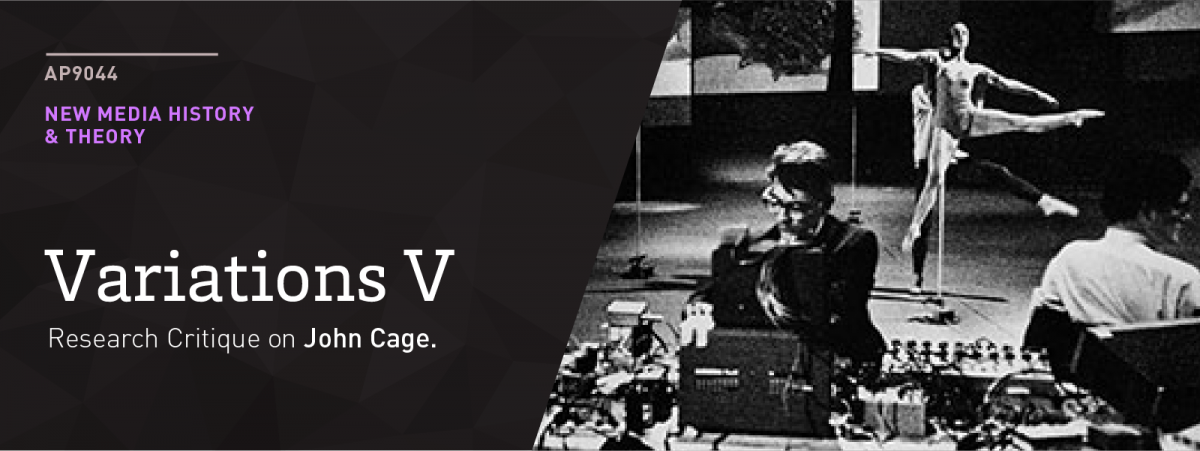Variations V by John Cage is an early example of a dynamic art works that changes in response to real-time stimuli. The work builds upon the ideals of “The Cybernetic Vision in Art”, put forth by the British artist Roy Ascott.
First proposed by the American mathematician and philosopher Robert Weiner, the concept of Cybernetics is largely concerned with the creation of autonomous systems that were capable of self-correcting or self-regulating behaviors. In his essay, Cybernetics in History, Weiner proposes that external stimulus from the environment (or information) must somehow be consumed, processed and interpreted in order to create systems that were capable of existing on a level higher that basic programming—artifacts that were not bound to the confines of their initial design. They had to be able to “control entropy through feedback.”
It is this core idea that we see Ascott discuss in the reading as well. To Ascott, modern artworks should be “responsive […] rather than fixed and static.” He mentions that it is important for modern art to offer “a high degree of uncertainty” that permitted “a great intensity of participation”.
With Variations V, we see much of these ideals come to fruition. Built in collaboration with Billy Klüver, the work makes use of a complex system of wireless radios and photocells that work together to make a highly responsive, unpredictable work of art. The photocells were aimed at the stage lights and responded to changes in light as dancers passed the cells. This triggered sound samples to be played. The dancers also wore radio transmitters on them which would produce a sound if they came within four feet of a radio antennae that was included in the space. Because the dance was never formally choreographed, each performance of this work resulted in a varied soundscape that was generated in real-time by the dancers’ decision and movements.
In this way, Variations V, could viably be described as an autonomous artwork, responding to it’s environment and self-regulating as it saw fit. It possessed its own set of sensors that allowed the work to glean “information” from its surroundings; responding in accordance to it’s programming. It existed as a “self-organizing organism” as described by Ascott.
By taking a cybernetic approach to art, Cage was able to create a work that was not confined to a single view or intention put forth by the artist. Instead, the work was capable of evolving overtime, determined by the actions and decision of the dancers that interacted with the space. This resulted in a level of organic creation that would have otherwise been impossible to achieve had the work been created unilaterally, channeling the sole vision of a singular creator.
SaveSave


Excellent piece. You expressed so well how Variations V as a cybernetic feedback system that straddles the edge between highly organized chaos and entropy. Cage of course also uses Chance technique to push the indeterminate nature of the work into this fluid stage of unpredictability. You captured precisely why this work was to be studied in the context of cybernetics as expressed by both Norbert Wiener and Roy Ascott. Thanks for completing this assignment and excellent work.